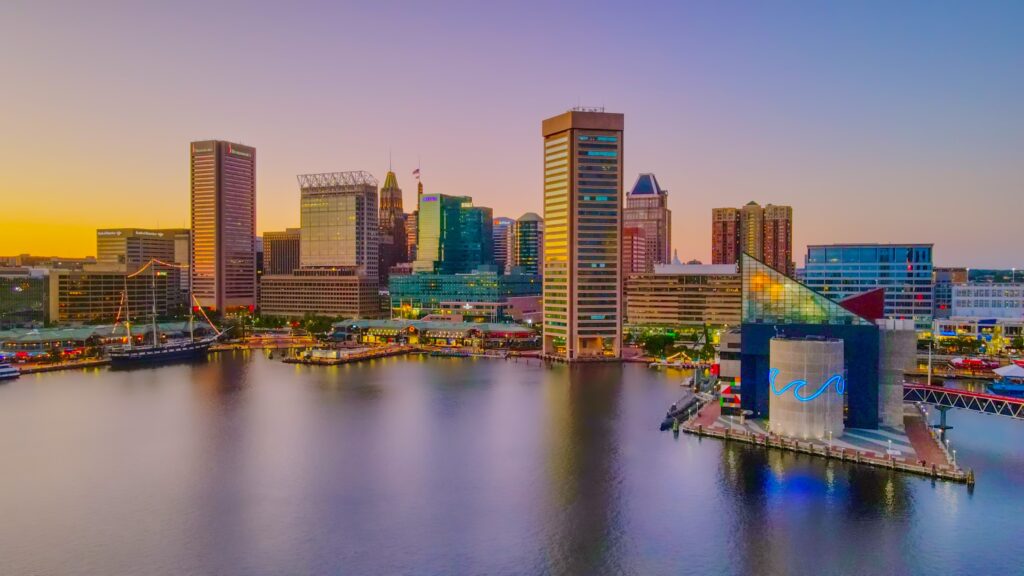The remote work model is proving more successful than major downtown business districts and landlords would like it to. Any effort to reenergize and establish vibrancy in major cities must begin with luring employees back to the workplace with the promise of amenities, social interaction and engagement, according to experts participating in “Civic Recovery Opportunities and Obstacles,” a recent webinar sponsored by Placer.ai.
The Economic Alliance of Greater Baltimore (EAGB) is among a number of local groups – including the Baltimore Development Corporation, the Greater Baltimore Committee and various city and state economic offices – with a mission of luring in-state and out-of-state businesses downtown.

“The word ‘downtown’ describes a place, not a static location, and place is dynamic. It evolves over time based on many factors, not the least of which is economic opportunity,” explains Michele Whelley, President & CEO of EAGB. “Our organization markets the economic opportunities throughout the Greater Baltimore region and in doing so we highlight the many assets that make the entire region – including the heart of the region, Baltimore City – attractive to the talent driving the region’s growth industry sectors. I am confident that post pandemic, Downtown Baltimore’s evolving personality and significant assets will attract that talent not only to the city’s core but to all of Greater Baltimore.”
“We are living within a snapshot in time in which companies and employees are exiting urban centers but it is a foregone conclusion that people will return,” explained Davon Barbour, Vice President of Advocacy & Economic Development, The Hollywood Partnership. “But, to expedite the process, cities need to provide compelling reason for tenants and employees to come back. People look for vibrancy. How can we accommodate them to ensure their safety and make people feel welcome? This might include refreshing parking codes, lowering costs across the board providing a runway for growth to occur. The traditional city center was dominated by office tenants but now, many companies realize they don’t need a downtown presence any longer. The pandemic weeded out some of the weaker operators and downtown business districts really need to figure out retention and attraction.”
“The challenge now is to create an environment downtown where people want to travel to each day and engage,” said Ian Ross, Head of Civic, Placer.ai.
American cities have achieved that numerous times before, Ross said, and pointed to his own experience as a young professional.
“Upon graduation from college, I immediately knew I wanted to relocate to the San Francisco area to take advantage of the high technology industry that is so prevalent in that city,” he said. “I understood San Francisco as a place and the place to be, and it really didn’t matter what company I was going to work for. I just wanted to be in San Francisco.”
The workforce dynamic, however, has changed and “employees are gravitating to the company itself because their physical presence can be anywhere in the country,” Ross said. “Pre-pandemic, cities attracted an employer to the downtown area [and] its employees followed. Now, you are not sure where they will work, where they will live and where their dollars will be spent.”
One career consideration could help bring workers back to office buildings and city centers.
“It is increasingly more difficult to get noticed in the workplace when an employee consistently works from home,” explained Owen Rouse, Vice President of Investment Sales, MacKenzie Commercial Real Estate Services. “In fact, many experts explain that working from home is a job, but being present in the workplace is a career. This is especially true as employees are migrating back into their offices and differentiating themselves from those who are remaining at home. It is important to be present and ‘in the line of sight’ to climb the ladder.”
Employers, however, can’t ignore that individuals are assessing a lot of factors when deciding where to work.
“People are increasingly evaluating the cost of living versus their quality of life and making decisions based on this analysis,” Ross added. “For instance, they are considering what they are paying for rent in New York City and comparing these costs with warmer climates in Phoenix or Florida. The pandemic accelerated this trend which began several years ago. To compete with this exodus, downtown business areas need to closely examine the best ways to attract an employer and its employees. This includes figuring out what amenities they need to offer, including restaurants and shopping, that will allow them to compete.”
“Businesses need to make sure there is vibrancy and a place to unwind at the workplace,” Barbour added. “We are humans and we crave social interaction. Office workers previously walked to downtown gyms before or after work but now they can exercise near where they live or at home. Placemaking is a key component of the equation.”